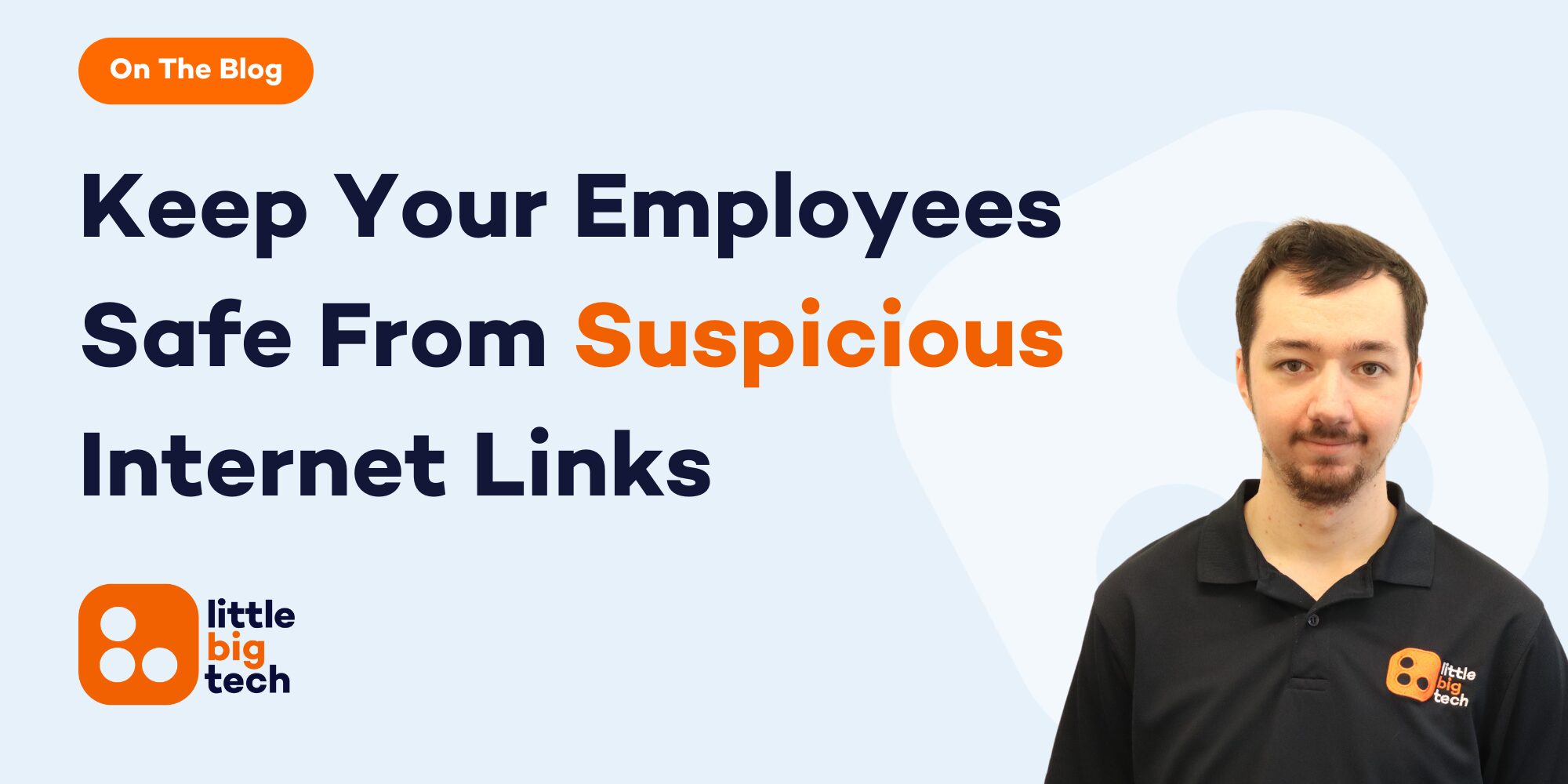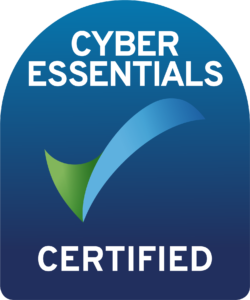Understanding The Risks of Employees Clicking Suspicious Sites
In today’s digital world, businesses are more reliant than ever on the internet to perform daily operations. However, the convenience of online tools and resources also introduces potential security risks. Employees clicking on suspicious sites can compromise an organisation’s security, putting sensitive data, network integrity, and even financial assets at risk.
Cybercriminals are increasingly targeting employees through deceptive websites designed to steal information, install malware, or cause other forms of damage. Whether it’s a harmless-looking link in an email or a misleading pop-up ad, one click on a suspicious site can lead to a cascade of negative consequences, including data breaches, financial losses, and a damaged reputation. In fact, a significant percentage of successful cyberattacks begin with an employee inadvertently clicking on a malicious link.
The consequences of employees clicking suspicious sites extend beyond just the immediate disruption they cause. Cyberattacks can escalate quickly, leading to widespread system downtimes, stolen intellectual property, or even long-term financial losses. This is why it’s crucial for businesses to understand the risks involved and take proactive measures to safeguard against this type of threat.
This article explores how you can prevent employees from clicking suspicious sites and provide practical solutions for businesses to protect their data and network. Through proper training, technical safeguards, and a culture of security awareness, organisations can reduce the likelihood of such incidents and improve their overall cybersecurity posture.
The Impact Of Employees Clicking Suspicious Sites On Business Security
The issue of clicking suspicious sites is a serious concern for many businesses, as it can have a wide range of security implications. From data breaches to full-blown system hijackings, the consequences can be devastating. Understanding these risks is essential in order to take proactive steps to protect your business from potential threats.
-
Data Breaches and Information Theft: One of the most immediate threats when an employee clicks on a suspicious site is the possibility of a data breach. Many cybercriminals use phishing websites to collect sensitive information such as login credentials, financial data, or intellectual property. If employees unknowingly provide this information, it can be used maliciously, leading to the theft of important company data, including customer information, proprietary business data, or trade secrets.
-
Malware Infections and Ransomware: Clicking on suspicious sites can result in malware being installed on your business’s network. Malware such as viruses, worms, or spyware can infect devices, leading to a system-wide breach. Ransomware attacks, where cybercriminals hold a company’s data hostage for a ransom, are particularly harmful. When an employee clicks on a malicious link, ransomware may encrypt critical files and demand a ransom in return for their release, causing significant operational disruption and financial loss.
-
Damage to Network Security: A single click on an insecure site can introduce vulnerabilities into your business’s network. Once malware or other malicious software gains access to the system, it can spread throughout your network, infecting multiple devices and potentially compromising the integrity of your entire infrastructure. Hackers may gain remote access to your network, potentially monitoring and stealing sensitive data.
-
Reputation and Brand Damage: When customers or clients learn that a business has suffered a data breach or security compromise, their trust can be severely impacted. The reputational damage caused by cyberattacks can have long-term consequences. Customers may be hesitant to do business with a company that has been compromised, leading to loss of revenue, market share, and a damaged brand image.
-
Legal and Regulatory Consequences: Businesses that fail to protect customer data or maintain a secure online environment may face legal ramifications. Data protection laws, such as the GDPR in the UK, require businesses to implement robust security measures to safeguard sensitive information. If an employee clicks on a suspicious site and causes a data breach, businesses could face hefty fines and legal action from affected individuals or authorities.
Understanding the potential consequences of employees clicking suspicious sites allows businesses to prioritise cybersecurity measures and implement systems that reduce the likelihood of an attack. Taking proactive steps to mitigate these risks will help safeguard not only your data but also your company’s reputation and financial stability.

How To Prevent Employees From Clicking Suspicious Sites
Preventing employees from clicking suspicious sites is a critical part of ensuring your business remains secure. Cybercriminals often use deceptive tactics to lure employees into clicking malicious links or visiting compromised websites. However, there are several practical measures that can be implemented to significantly reduce this risk.
-
Employee Training and Awareness: The most effective way to prevent employees from falling victim to phishing attacks or suspicious sites is through education. Training your employees to recognise phishing emails, suspicious links, and warning signs of cyber threats is crucial. Make sure they understand the potential consequences of their actions, such as data breaches, identity theft, and financial losses. Regularly update training materials to keep pace with the ever-evolving cyber threat landscape.
-
Implement a Robust Web Filtering System: A web filtering system can block access to harmful websites, including those that may contain malware or phishing scams. These systems use categorised lists of known dangerous websites and can prevent employees from accessing them. By filtering out harmful content, you can significantly reduce the chances of an employee accidentally visiting a malicious site. These filters should be configured to allow access only to trusted and approved websites.
-
Use Anti-Malware and Anti-Phishing Software: Anti-malware software and anti-phishing tools are essential in protecting devices from suspicious sites. These programs detect and block malicious websites in real-time, providing an additional layer of defence. Anti-phishing software can flag suspicious emails and links, preventing employees from clicking on them. It is also important to keep this software regularly updated to ensure it is effective against the latest threats.
-
Enforce Strong Password Policies and Two-Factor Authentication (2FA): Even though preventing employees from visiting suspicious sites is important, businesses should also ensure that their systems are secure in case an attack does occur. Strong password policies, combined with two-factor authentication, add layers of security to the organisation’s accounts. Even if a malicious website attempts to collect login credentials, 2FA provides an extra barrier, making it harder for attackers to gain access to sensitive systems.
-
Monitor Internet Usage and Activities: Regularly monitoring employees’ internet activities can help detect unusual behaviour. Tools that track website visits can alert administrators to suspicious browsing patterns, enabling swift intervention. This monitoring should not be invasive but should be part of a broader security strategy to ensure compliance with company policies.
-
Create a Clear Incident Response Plan: Despite all preventive measures, there may still be incidents where an employee clicks on a suspicious site. Having an incident response plan in place ensures that your business can act quickly to contain and mitigate the damage. The plan should include steps such as reporting incidents immediately, isolating affected systems, and assessing the scope of the breach. The quicker the response, the less severe the impact.
By implementing these measures, businesses can significantly reduce the risk of employees clicking suspicious sites and protect themselves from the potentially devastating consequences of cyberattacks. Taking a proactive approach to cybersecurity and providing employees with the tools and knowledge they need will go a long way in safeguarding your company’s digital assets.
Financial Implications Of Employees On Clicking Suspicious Sites
The financial implications of employees clicking suspicious sites can be severe and long-lasting for a business. Cybercriminals often use these deceptive tactics to infiltrate networks, steal sensitive information, and launch malware attacks, all of which can result in significant financial losses. It’s essential for business owners and IT managers to understand the potential financial consequences of these actions, as well as the steps they can take to protect their organisation.
-
Data Breaches And Compliance Fines: When employees visit suspicious websites, they often expose the organisation to the risk of a data breach. Cybercriminals can access customer information, financial data, and intellectual property. A breach of sensitive data can result in legal and regulatory consequences, particularly under data protection regulations such as the General Data Protection Regulation (GDPR). Organisations may face significant fines for non-compliance if personal data is compromised, leading to further financial strain. For example, the UK’s GDPR allows for fines up to £17.5 million or 4% of a company’s global turnover, whichever is higher.
-
Loss Of Business And Customer Trust: When an employee clicks on a suspicious site, it may lead to a breach that impacts customers, suppliers, or other business partners. If customers’ data is compromised, it can erode their trust in your business, leading to a loss of future sales. Customers are increasingly concerned about the security of their personal information. Losing trust can result in customer churn, a drop in sales, and a damaged reputation, all of which have a significant financial impact.
-
Ransomware And Extortion Costs: One of the most common financial threats associated with employees clicking suspicious sites is the risk of a ransomware attack. In these cases, cybercriminals encrypt a business’s files and demand a ransom for their release. Paying the ransom does not guarantee that the data will be returned or that the attacker will not target the organisation again. Even if the business does not pay the ransom, the costs of recovering encrypted data, rebuilding systems, and downtime can be astronomical.
-
Operational Downtime And Lost Productivity: When an employee unknowingly clicks a suspicious site, it can lead to system infections that cause operational shutdowns. Cyberattacks often result in prolonged downtime, during which employees cannot access critical files, systems, or applications. During this period, the business suffers from lost productivity, which translates into direct financial losses. The longer the downtime, the higher the costs for the business, particularly if it affects customer-facing operations or mission-critical tasks.
-
Increased IT And Security Costs: If an employee clicks on a suspicious site, the organisation may need to invest in additional IT resources and security services to recover from the incident. This includes paying for security software, hiring external cybersecurity consultants, and implementing enhanced security measures. Over time, repeated incidents can result in a significant increase in IT-related costs, diverting resources that could otherwise be used for growth and innovation.
-
Legal Costs And Lawsuits: In addition to fines, businesses may face lawsuits from customers or employees whose data was compromised due to an employee’s actions. Legal fees for defending against these lawsuits, along with any potential settlements or damages, can add up quickly. Even if the business prevails in court, the legal process itself can be financially draining and time-consuming.
The financial implications of employees clicking suspicious sites are profound and multifaceted. From data breaches and compliance fines to loss of reputation and operational downtime, the costs can quickly escalate and threaten the financial stability of a business. It’s vital for organisations to invest in robust cybersecurity measures and employee training to mitigate these risks and safeguard their bottom line.

Common Types Of Suspicious Sites Employees Might Click
Employees are often unaware of the dangers of clicking on suspicious websites, especially when these sites appear harmless at first glance. Understanding the different types of suspicious websites employees might encounter can help businesses build more targeted strategies to prevent these risks. Below are some common types of sites that employees should be aware of:
-
Phishing Sites:
Phishing websites are designed to appear as legitimate pages, such as login portals for popular services, banking sites, or even company intranet pages. However, these sites are built with the sole purpose of stealing login credentials and other personal information. These sites often look identical to the real ones, making it difficult for employees to distinguish between them. -
Fake Software Download Sites:
Many malicious websites disguise themselves as legitimate platforms offering free software or updates. When an employee clicks on these links to download what they believe is a useful tool, they inadvertently install malware, ransomware, or other harmful programs that can compromise the company’s security. These websites often offer pirated versions of software or applications that employees may not be familiar with. -
Social Engineering Sites:
Some websites are designed to manipulate users into providing sensitive information. These sites use tactics such as creating a sense of urgency (e.g., “Your account has been compromised! Click here to secure it now”) or offering seemingly irresistible deals that lead employees to enter personal information. These sites are often used for fraud or identity theft, putting the organisation at risk. -
Fake News and Malicious Ads:
Another common type of suspicious site is those containing fake news or malicious advertisements. These ads can redirect employees to harmful sites or even automatically download malware. They often appear on websites that may not be fully secure or have questionable content. Employees might unknowingly click on them while browsing, exposing the business to potential cyberattacks. -
Spoofed Social Media Pages:
Social media is a prime target for attackers, and fake pages imitating popular social networks or brand pages are common. These pages often ask users to log in using their credentials, thus giving attackers access to personal and company information. In some cases, these pages ask employees to download apps that may compromise their systems.
By understanding the types of suspicious sites that exist, businesses can educate employees on how to spot and avoid them. Awareness and training are key to ensuring that employees do not fall victim to these deceptive tactics.
Protecting Your Business From Cyber Threats And Suspicious Sites
At Little Big Tech, we recognise the growing threat of cyber attacks and the importance of protecting our businesses from risks such as employees clicking suspicious sites. These types of attacks can have severe financial and reputational consequences, making it crucial to take proactive measures to safeguard our organisations.
The first step in preventing such attacks is ensuring that our teams are well-trained to recognise suspicious websites and the dangers they present. By educating employees on how to identify phishing sites, malware-infected pages, and other potential threats, we significantly reduce the risk of a breach. Regular training, combined with real-time threat detection and response tools, helps to foster a culture of awareness that is essential in today’s cyber environment.
Additionally, implementing robust security measures such as firewalls, URL filtering software, and antivirus tools will protect against harmful sites. Having clear internal policies for web usage and regular updates to security software ensures we are doing everything we can to stay secure.
However, preventing cyber threats goes beyond just technical measures. We also need to stay vigilant and continuously monitor for potential vulnerabilities. This means regularly assessing our cybersecurity infrastructure, conducting simulated phishing exercises, and addressing emerging threats promptly.
At Little Big Tech, we’re committed to providing expert guidance and cutting-edge solutions to help our clients stay one step ahead of cybercriminals. We believe that by combining education, proactive technology, and ongoing vigilance, we can safeguard our businesses and keep our digital environments secure.
Let’s work together to protect our data, mitigate risks, and ensure that our organisations remain resilient in the face of cyber threats.








